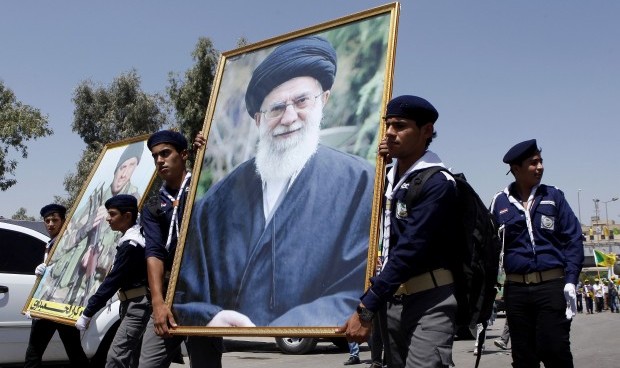“Anything that is conceived by mind must happen in reality,” say the Germans. For numerous Muslims and Arabs, however, anything unexpected can happen.
According to the Iranian Mehr news agency, a few days ago the Supreme Guide of the Islamic Republic of Iran, Ayatollah Seyed Ali Khamenei, spoke of the region’s sufferings during a meeting with Sultan Qaboos of Oman. Among the points highlighted by the Iranian leader was that the chief cause of tension in the region was that “religious, ideological and sectarian issues have intruded into political disputes between countries.” The words are wonderful and the advice is kind. We wish this were coupled with action.
Without a doubt, in this region we are suffering from heightened tensions in which religion and other tools are used as a weapon with the aim of prolonging such tension. Faith remains the most prominent of all of these weapons.
Religious propaganda, which is used for attacking political dissidents, is considered to be the most dangerous of all weapons, for it ends cordiality and ruins social structures. In the Sunni part of society, being the majority of the Muslim nation, we have dozens of examples of the abuse of religious propaganda against political dissidents. Every now and then, a new propaganda campaign emerges, the most recent of which are Al-Qaeda and the propaganda campaigns launched by the Muslim Brotherhood organization.
There was much rhetoric about this in the past—and this will continue to happen in the future—but what about the impact of religious propaganda of the Shi’ite “Khomeinist” variety? Isn’t Iran, in its radial political discourse that is aimed at mobilizing the masses, considered a huge fountain of religious tension? Who brought to us Hassan Nasrallah, together with his political, sectarian, radical and armed party? Isn’t commitment to the velayat-e faqih (guardianship of the Islamic jurist) a prerequisite for political promotion in Iran? Didn’t Khamenei himself translate Sayyid Qutb’s books into Persian? As we all know, Sayyid Qutb was the originator of radical violence, the discourse that produced Zawahiri and others, as expressed by Zawahiri himself?
Didn’t Ahmadinejad say during a speech he gave in the UN in the autumn of 2005, that he was surrounded by an aura of light and that he was speaking with the Mahdi? Didn’t Hassan Nasrallah, who is much obliged to velayat-e faqih and who considers Khamenei his spiritual leader, say it loudly in his Quds Day speech: “We are the Shi’ites of Ali bin Abi Taleb in the world”? It was odd that his speech was intended to attack sectarianism.
In fact, the guide, and whoever follows in his footsteps, are complaining bitterly about Takfirist groups and are disparaging sectarian fanaticism these days. They did so only when overt clashes erupted between Iran and these groups, mainly in Syria and Lebanon. Actually, the evil represented by such Takfirist groups did not emerge all of a sudden.
We all are aware that Iran ten years ago—and perhaps it continues to be so—is a place for residence, transit or coordination of many Al-Qaeda members such as Saif Al-Adl, Sa’ad bin Laden, Saleh Al-Qara’wi and several others.
The guide’s complaint is not about sectarian fanaticism in principle. The complaint depends on the degree of harm such fanaticism may inflict on Iranian interests. This is Tehran’s true complaint.
